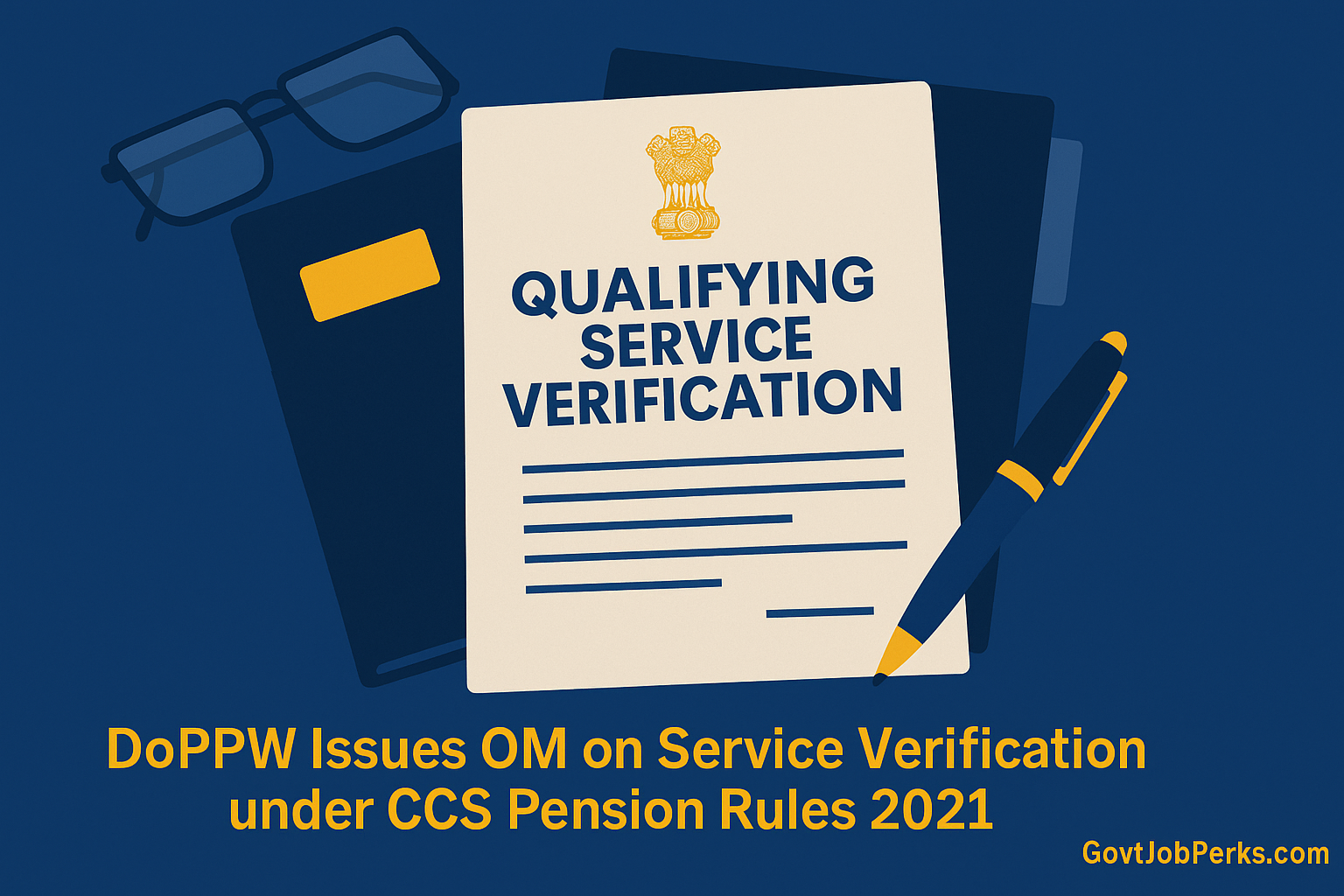Periodic Verification of Qualifying Service under CCS (Pension) Rules, 2021 — New OM Dated 29 October 2025
The Department of Pension and Pensioners’ Welfare (DoPPW) under the Ministry of Personnel, Public Grievances and Pensions has issued a new Office Memorandum (OM) dated 29 October 2025 regarding the periodic verification of qualifying service under the Central Civil Service (Pension) Rules, 2021.
This circular, numbered No. 28/04/2024-P&PW(1)/QS/10145, reiterates the importance of timely service verification for Central Government employees to ensure smooth pension processing and avoid last-minute discrepancies.
🔹 Purpose of the OM
The main aim of this OM is to ensure that qualifying service of every Central Government employee is properly verified at specific intervals — once after completion of 18 years of service, and again five years before the date of superannuation.
This verification helps in determining the total qualifying service for pension and gratuity purposes as per Rule 30 of the CCS (Pension) Rules, 2021.
🔹 Key Provisions of the Circular
According to the Office Memorandum:
- Verification after 18 years of service and 5 years before retirement:
The Head of Office, in consultation with the Accounts Officer, must verify the service details of every employee during these two stages and issue a formal Certificate of Qualifying Service in Format 4. - Final verification:
Once the verification under Rule 30 is completed, it will be treated as final and cannot be reopened except when changes occur in the rules or orders governing pension eligibility. - Procedure as per Rule 57(1)(a):
The verification process should strictly follow the procedure outlined in clause (a) of sub-rule (1) of Rule 57 of the CCS (Pension) Rules, 2021. - Annual report submission:
Each Ministry or Department must submit a report to its Secretary by 31st January every year. This report should include:- Names of employees eligible for qualifying service verification in the previous year,
- Details of employees who actually received the certificate, and
- Reasons for any pending cases.
- Strict implementation required:
The OM directs all Ministries, Departments, and attached or subordinate offices to ensure strict compliance with these provisions for effective pension management.
🔹 Format 4 – Certificate of Verification of Service
The OM also provides a ready-to-use Format 4, titled “Certificate of Verification of Service for Pension and Gratuity”.
This certificate is issued by the Head of Office in consultation with the Accounts Officer. It confirms the total qualifying service (in years, months, and days) verified based on official service records.
The certificate ensures that:
- The service verification is final and conclusive,
- Any future review will only be done if the pension rules themselves are revised, and
- The employee has clear visibility of their verified service years well before retirement.
🔹 Why This Verification Matters
This initiative is critical for:
- Avoiding pension delays: Early verification prevents last-minute corrections in service records.
- Ensuring transparency: Employees can see their verified service well in advance.
- Reducing workload: Departments can process pension cases more efficiently when service verification is completed timely.
- Accurate pension and gratuity benefits: Proper verification ensures correct calculation of retirement dues.
🔹 Key Takeaway
The DoPPW OM dated 29 October 2025 reinforces the Government’s focus on streamlining pension processes under the CCS (Pension) Rules, 2021.
By mandating periodic service verification, it aims to make the pension system more transparent, efficient, and error-free for all Central Government employees.
For full compliance, all Ministries and Departments must issue qualifying service certificates in time and submit annual reports by 31 January each year.

